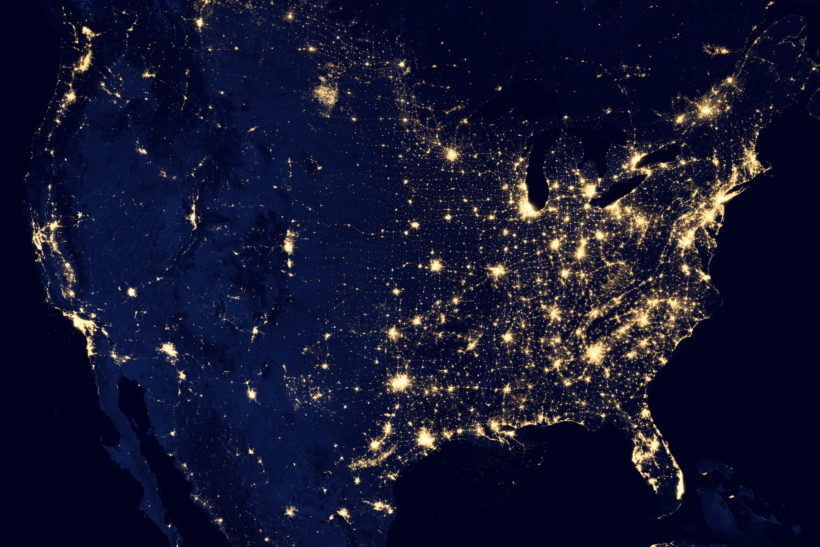On April 22, 1970, with the help of former United States Senator Gaylord Nelson, an annual tradition was born: Earth Day. The day was established with the goal of educating and spreading awareness of environmental and conservation issues, and the results have been tremendous. More than one billion people around the globe participate in Earth Day activities each year, and you can join in as well. In fact, you can even use the day as an opportunity to go green while saving some green, too. To find out how, let’s look at a few of the most powerful ways you can conserve resources in your home.
 Move Toward the (LED) Light
Move Toward the (LED) Light
A single light bulb may not seem like much of an energy hog on its own, but the average home has a total of 40 to 45 bulbs. If those bulbs are of the old-school incandescent variety, that can quickly add up to a lot of wasted energy. Incandescent bulbs are extremely inefficient, converting just five percent of the energy they consume into usable light. Instead, swap them out with LED or CFL bulbs. Not only will you enjoy significant energy savings but the bulbs will also last far longer, boosting the savings even more.
Upgrade Your Windows
Everyone knows that a poorly insulated home is highly inefficient. What you may not know is that even an otherwise well-insulated home may still bleed energy if it’s outfitted with old, outdated windows. To maximize your home’s efficiency, consider upgrading to modern windows featuring the ENERGY STAR label. ENERGY STAR windows are certified to offer excellent efficiency, reducing the exchange of heat through the window and keeping the air inside your home just as warm or cool as you intended.
Adjust Your Computer Settings
If you have a desktop PC in your home, you may be surprised at how much energy it consumes. To help limit the damage, make sure that you’ve adjusted its power settings to turn off the display after 15 minutes of inactivity and to shut down or enter sleep mode after 30 to 60 minutes. It won’t impact your ability to use your PC, but it will cut down on unnecessary waste in a big way. While you’re at it, why not use your computer to share energy efficiency tips and encourage others to join you in reducing energy use? The internet makes it easier than ever to reach like-minded individuals, and your efforts may really make a difference.
 Have Your HVAC System Serviced
Have Your HVAC System Serviced
Heating and cooling are among the largest energy drains in a typical home, and if your HVAC system isn’t kept in top condition, it could be costing you much more than it should. To ensure that you’re conditioning your home as efficiently as possible, have your HVAC system professionally inspected and maintained twice per year: once in the spring before the cooling season and once in the fall before the heating season. A professional technician can spot inefficiencies and keep your equipment running properly, and the cost of routine servicing is far less than the cost of making major repairs to a system that’s broken down.
Spring for New Appliances
Few things in your home can suck up energy more quickly than aging, outdated appliances. If you own a refrigerator, washer, dryer or other appliance that’s seen better days, consider swapping it out with a new ENERGY STAR-certified model for a big boost in energy savings. A programmable smart thermostat is also a wise investment. Many people simply set their thermostat to a certain temperature and leave it there all day and night, but why heat or cool your home if no one is there? A smart thermostat can keep your home comfortable when you’re around and dial back the HVAC when you aren’t, saving from 10 to as much as 23 percent on monthly energy costs.
Turn Down Your Water Heater
Excuse the pun, but your energy bill may really be in hot water. Most water heaters come preset at 140 degrees, which is far hotter than you’ll need for most purposes and can even pose a risk of scalding. Every 10 degrees that you lower your water heater’s thermostat can be expected to produce up to five percent in energy savings. The U.S. Department of Energy recommends setting the thermostat to 120 degrees for most households, though you can set it higher if you require especially hot water. While you’re at it, wrapping your water heater in an insulating blanket is another excellent, low-cost way to save on energy.
We all share this planet together, and we all have a responsibility to take care of it. Earth Day serves as an important reminder of this fact, but there are many simple acts you can do every day to reduce your footprint and live a more sustainable life. By implementing the simple actions above, you can ensure that you’re doing your part – and put some more cash in your pocket along the way.

